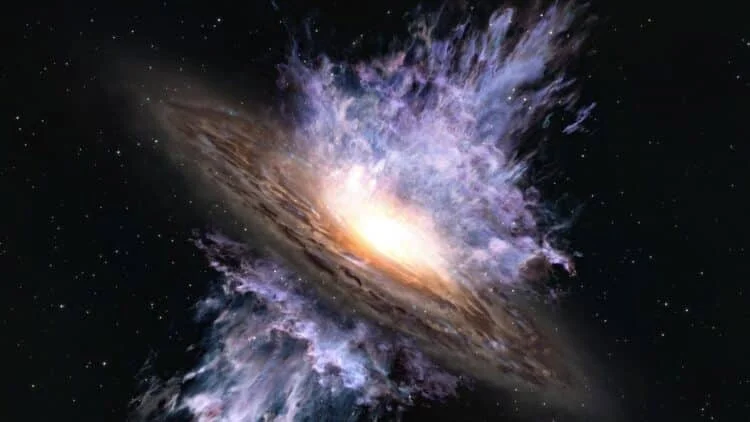
NASA’s XRISM Telescope Uncovers ‘Superstorm’ Black Hole and Changes Understanding of Galaxy Evolution
NASA and the Japanese space agency JAXA have made a groundbreaking discovery that could rewrite our understanding of the universe. Using the XRISM space telescope, scientists have observed a cosmic 'superstorm' emanating from a supermassive black hole, challenging previous assumptions about galactic winds and their impact on star formation.
Previously, galactic winds were thought to be smooth and continuous. However, the XRISM telescope, a collaborative effort between Japan, the USA, and ESA, revealed that gas flows escaping from a supermassive black hole in galaxy PDS 456 are anything but serene. These flows move at a staggering 20% to 30% of the speed of light and are unstable, dense, and extremely fast. This galaxy is located 2.5 billion light-years from Earth and houses one of the most active black holes ever observed.

What's more surprising is that these winds don't just destroy; they also create. As these 'gas bullets' traverse the galaxy, they compress the surrounding gas, triggering gravitational chain reactions that lead to the formation of new stars in previously inactive regions. This dual role of destruction and creation challenges the conventional view that black holes are solely consumers of matter and energy. They are, in fact, redistributors, fostering conditions for stellar birth.
According to Space mission discovers ‘bullet-like’ winds shooting from a supermassive black hole - findings, which changes our understanding of how galaxies evolve with their central black holes, came from an international team led by Japan's space agency (JAXA). Professor Christine Done from the Centre for Extragalactic Astronomy was one of two European scientists involved in this research as part of the X-ray Imaging and Spectroscopy Mission (XRISM), which studies hot gas winds flowing through galaxies.
The XRISM telescope's advanced technologies allowed scientists to identify different gas flows and measure their velocities with unprecedented precision, without this observation, it would not have been possible to fully realize how it could change our understanding of the influence that black holes have on their host galaxies.

“PDS 456 is a valuable laboratory for studying the very powerful winds produced by supermassive black holes in the local universe. This new observation has allowed us to measure the geometry and speed distribution of the wind in a level of detail that was unthinkable before the advent of Xrism,” explained the team.
Furthermore, the black hole's energy release during these storms is immense. It loses enough gas to potentially form 60 to 300 stars similar to our Sun. Such discoveries, particularly those made possible by cutting-edge tools like the XRISM telescope signify paradigm shifts in our perception of the cosmos.
This discovery begs the question: How many other galaxies are shaped by these 'superstorms'? Could understanding these phenomena help us unlock the secrets of galaxy evolution? Share your thoughts in the comments below!